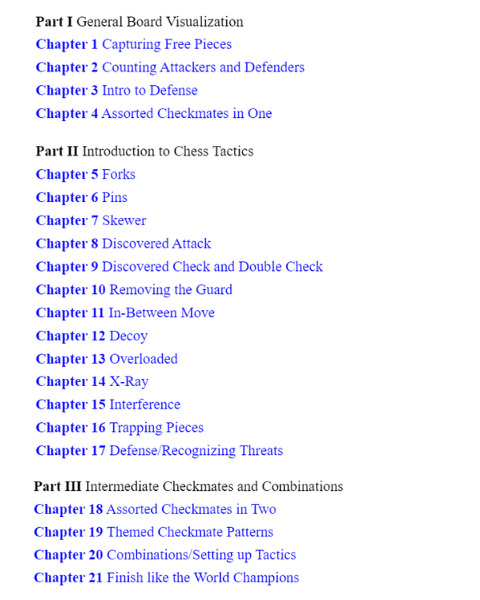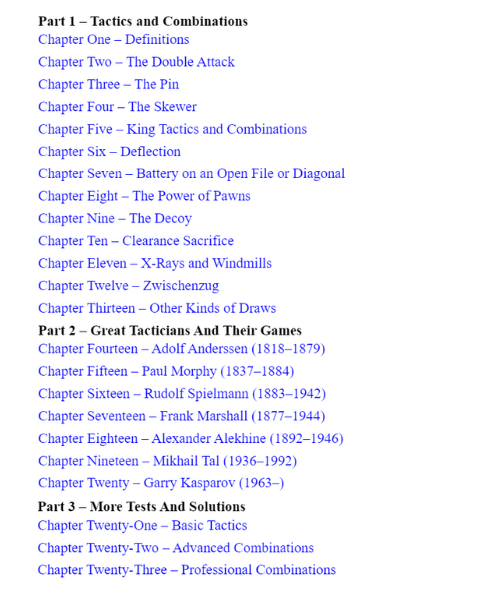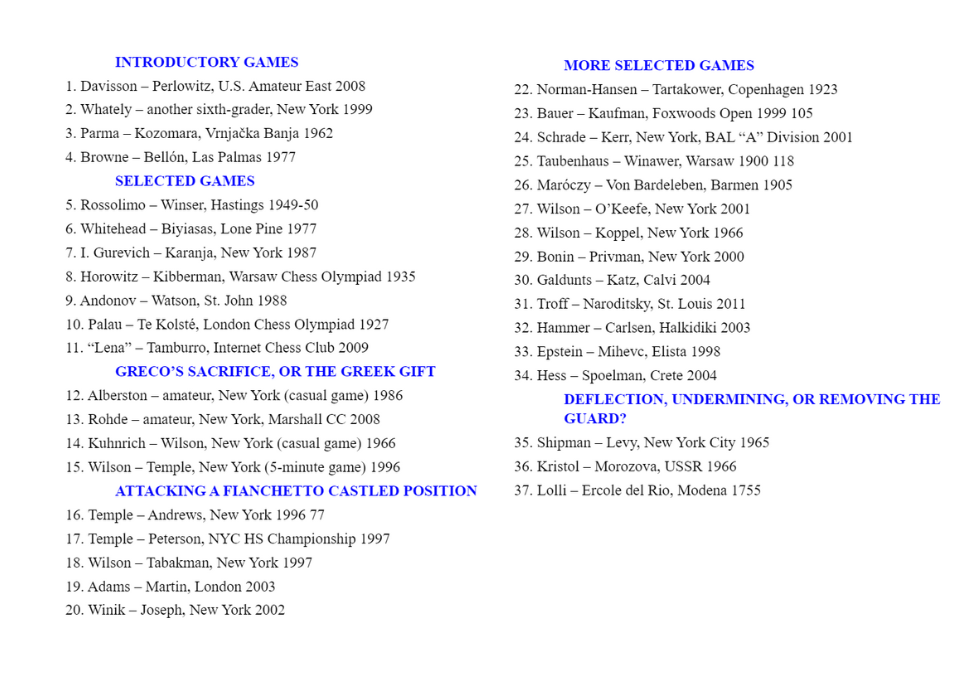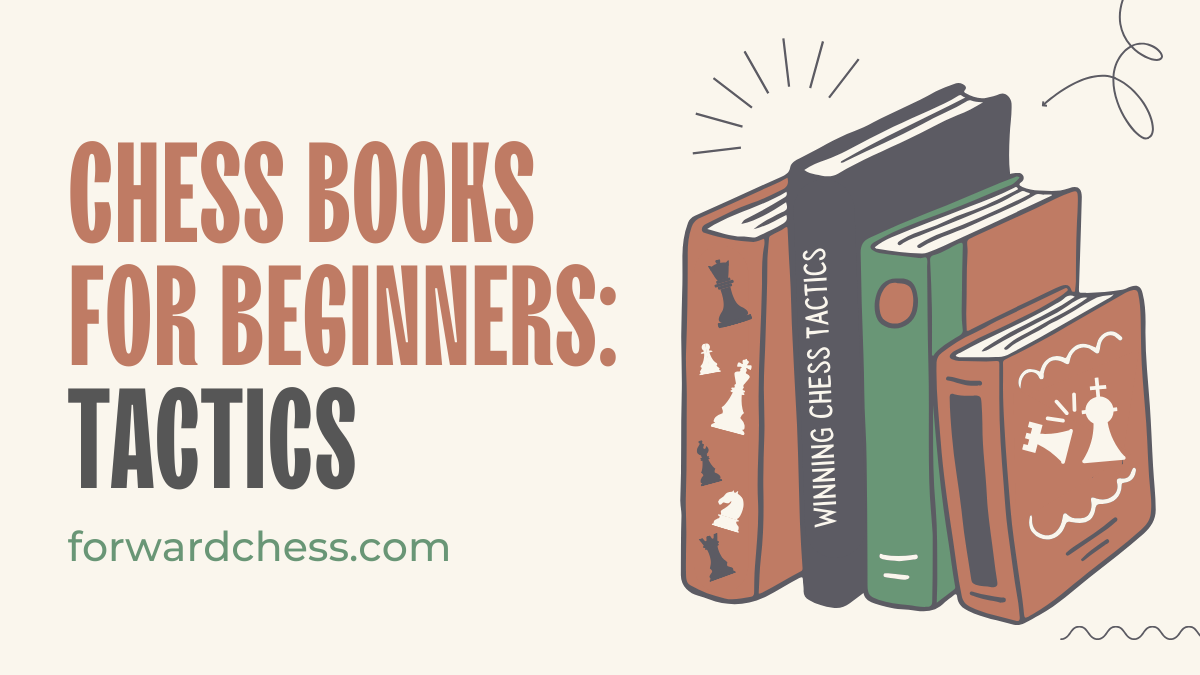Embarking on your chess journey and wondering where to start? Or have you found yourself captivated by the game, but are struggling to improve? Welcome to our “Chess Books for Beginners” series that focuses on core concepts for beginners, and how you can learn them easily with chess books! Starting off, we delve into a crucial building block of chess learning: tactics.
Tactics are the exciting, brain-crunching moves that can quickly decide the outcome of a game. These are moves (or a move) that bring about some kind of advantage – such as winning a piece or getting a checkmate. Think of it as a clever trick or strategy that catches your opponent off-guard.
Tactics can also be seen as patterns. With the evolution of chess, we have come to name these patterns which allow our brains to work on them individually so that we can immediately recognize them in our games. Some of the most essential tactics for beginners to know are: pins, forks, skewers, discovered attacks, double checks, and basic checkmates such as in one or two moves.
Let’s take a closer look at each kind of tactic:
Basic Chess Tactics
Hanging Pieces
This is not usually classified as a tactic, but I think that it is an important concept to understand as it enables most tactics.
A hanging piece is a piece that is either:
- Undefended
- Defended but is attacked by a less valuable piece
- Defended, but has more pieces attacking it than it has defending it
Undefended Hanging Piece
Defended but More Valuable Hanging Piece
Underdefended Hanging Piece
In chess, hanging pieces can be the key to the best move in the position. When your opponent has a hanging piece (or more) on the board, you can look for ways to attack it, and the best way to do so is with a tactic!
Forks
The most common double attack where you use one piece to execute two or more attacks at the same time.
This means that you have a piece (such as a Knight) that attacks two (or more) pieces at the same time allowing you to win one of these pieces. However, it is not always about the pieces – you can also fork a piece and a checkmate square.
Forking Two Pieces
Forking a Piece and Checkmate
Pins
A pin is a move that immobilizes an opponent’s piece.
When you pin a piece, you stop it from moving as there is a more valuable piece “behind” it. This can be a king, which is called an absolute pin, or it can be any other piece of higher value, making it a relative pin.
Absolute Pin
The Knight can absolutely not move because the King is behind it.
Relative Pin
The Knight can move, but should not move as the Rook, which is more valuable, is behind it.
Pins are used to gain material, but moreover, they create pressure. Think of it as essentially freezing your opponent’s piece, and because the piece is frozen, it can’t do things like defend other pieces or move to safety. After understanding the basics of pins, you will also need to understand how to take advantage of pinned pieces.
Skewers
Similar to a pin but with a more valuable piece in front.
Think of it as an inverse pin – but this time, the piece that is directly attacked should move as it is more valuable.
Discovered Attacks
Moving a piece to reveal an attack by another piece.
This is like a surprise attack, and can be very dangerous as the moving piece can be executing its own attack, which paired with the attack from the discovered piece, makes it another type of double attack.
P.S: Think of a “Double Attack” as an umbrella term for any move that creates two or more attacks at the same time.
After 1.Nf6+, White employs a discovered attack as by the Knight moving, it discovers an attack from the Rook onto the Queen. At the same time, the Knight attacks the black King with a check.
Double Checks
Checking the opponent’s king with two pieces simultaneously.
I like to think of this as the most forcing move in chess.
And many more! But don’t be daunted; the key is to start with understanding these basics before diving deeper.
The Knight has just moved from e4, unleashing a double check on the white King.
Mate in One and Two
Quick checkmates are essential to tactics training, and are all about escape squares – look at where your opponent’s king can escape to, make sure it is covered, and then checkmate!
Mate in One
Often, basic tactics are also used to checkmate. Look at this example using a pin:
White plays 1.Rg1 checkmate, as the Knight can’t capture because it is pinned.
Chess Books for Beginners: Tactics Books
Practice makes perfect when it comes to tactics. It is one thing to know what the different concepts are, and it is another to be able to use them in games and recognize the patterns. To do this, you need to regularly solve tactical puzzles covering all themes.
Here is a suggestion list of books for beginners that explain tactical concepts, and also provide more than enough exercises for each theme:
Everyone’s First Chess Workbook

As the name suggests, this workbook is a must-have for any beginner. It offers a comprehensive introduction to tactics, covering all the foundational themes. Exercises start off as “guided practices” which means that you are nudged in the direction of the solution so that you know what to look for. Thereafter, test positions are given to apply your skills.
Book Examples
HINT: Use a Knight fork to win a rook
HINT: The Queen on g3 has its eyes on the black Queen on d6. Give away your Knight to win the queen.
Table of Contents


Dive into the tactics with Seirawan as your guide. His methodical approach ensures a clear understanding of key tactics that pave the way to winning. The book covers all basic and intermediate tactics, but takes it a step further by showcasing “Great Tacticians and Their Games.” From Paul Morphy to Garry Kasparov, take a look at how some of the greatest players implemented these tactics in their games. The final chapter consists of test positions, ranging in difficulty.
Book Examples
White is down an exchange. Find two ways they can win back the exchange.
White to play. (Look at what is “hanging”.)
Table of Contents

1001 Chess Exercises for Beginners

Practice makes perfect! With over a thousand exercises, this book gives you plenty of tactical exercises. All the basics are covered with dedicated chapters, and the beginning of each chapter presents a few example positions so that the reader can understand the concept and see how it is executed in a position. Each position is also titled, giving a (sometimes very subliminal) clue to the solution, or what the reader should be looking for.
Book Examples
White to move. Can you utilize the pin?
Black is pinning your Queen. Is this over or does White have something up their sleeve to save the day?
Table of Contents

CCT for Kids & Club Players – Level 1

A perfect starting point, this book introduces tactics in a fun, engaging manner, suitable for kids and club players alike. The content is mostly based on checkmates and learning to trap your opponent’s king.
Book Examples

I like the idea of having to look for a check and then checkmate, it makes the reader carefully look at the whole board for checks.
Table of Contents


Apply your knowledge of tactics and learn how to launch straightforward yet effective attacks. Through game examples, Wilson beautifully illustrates how a solid understanding of tactics can lead to successful attacking strategies. This book serves as a practical approach to learning tactics, and helps you know what to look for.
Book Example
Table of Contents

Have any questions, or opening suggestions? Let us know in the comments!
Puzzle Solutions
Everyone’s First Chess Workbook
Exercise 1: 1.Nf5+! forking the Rook and King
Exercise 2: 1.Ng6+! with a discovered attack on the Queen.
Exercise 3: 1.Be8 winning one of the rooks
Exercise 4: 1.Bh7+ giving up the Bishop for a discovered attack on the black Queen.
1001 Chess Exercises for Beginners
Exercise 5: 1.Nd5+ forking the King and the Rook. Black cannot capture the Knight as the c-pawn is pinned.
Exercise 6: 1.Rg1! Pinning the Black Bishop back!
CCT for Kids & Club Players – Level 1
Exercise 7: Mate in 2
- Rock Solid Chess: Volume 2 - February 21, 2024
- Unsung Heroes of Chess - February 19, 2024
- Build Up Your Chess: The Fundamentals - February 7, 2024
